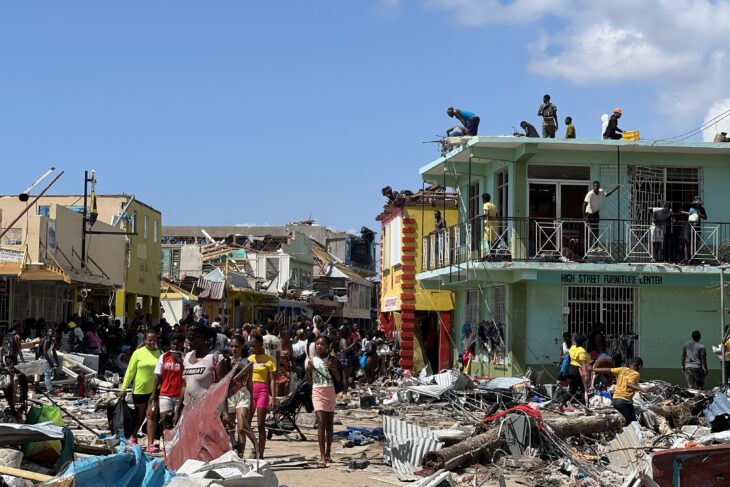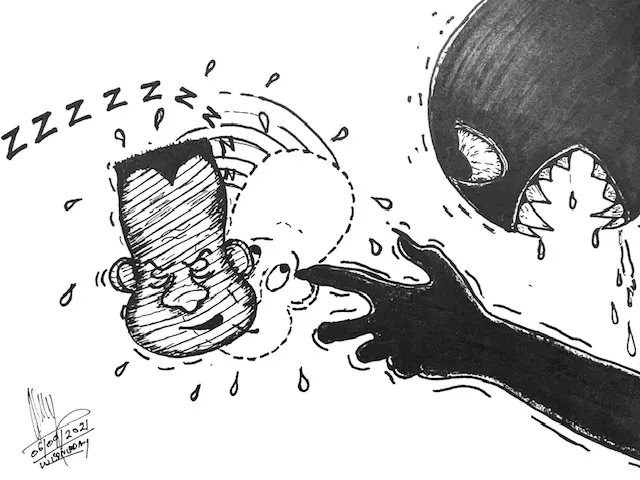
 As a child I grew up on public transportation. All of my secondary and most of my tertiary education was pursued under the offerings of the Jamaica Omnibus Service Ltd (JOS) — an English-owned company which was nationalized by the Government of Jamaica in the 1970s before going out of business in 1983 after 30 years in operation. It had some 600 buses operating from Kingston to St Andrew, Spanish Town, Portmore, and Bull Bay.
As a child I grew up on public transportation. All of my secondary and most of my tertiary education was pursued under the offerings of the Jamaica Omnibus Service Ltd (JOS) — an English-owned company which was nationalized by the Government of Jamaica in the 1970s before going out of business in 1983 after 30 years in operation. It had some 600 buses operating from Kingston to St Andrew, Spanish Town, Portmore, and Bull Bay.
Public transportation under the JOS was heavily criticized for not travelling according to schedule and for having passengers wait too long at bus stops. Otherwise each trip was fairly ordinary — no music of any sort, no loader men, no run jostling for passengers, no tinted windows, no passenger expectation to be let off or picked up between stops and you could be denied entry if the bus conductor deemed the bus sufficiently full.
Conductors and drivers were decently attired in company-issued uniforms and underpants were worn under rather than over pants. Every commuter was issued with a ticket and there was the occasional inspector who boarded the bus to ensure compliance. Overt scamming practices had not yet become popular and the itinerant on-board preacher was usually given the benefit of the doubt and a donation or two.
Then the JOS left and all hell broke loose. A ramshackle system of minibuses and franchised routes became the order of the day and the drivers and conductors a law unto themselves. Many of the buses were not high enough to accommodate standing passengers but that did not prevent operators from packing them away, heads bowed and humanity crushed.
No bus, however configured, was ever too full to admit another commuter. In fact, every bad practice outlawed by the JOS was now par for the course. Trying to make sense of it all, rumours started swirling as to ownership of the buses and it ultimately became widely believed that the operators were being allowed to get away with so much because they were not owners but merely the employees of well-heeled politicians and policemen. As public discontent grew, the situation became increasingly untenable.
Changing While Remaining the Same
Fast-forward to 1998 when Peter Phillips as Minister of Transport ushered in the era of the Jamaica Urban Transit Company Ltd (JUTC). Public expectation was high that the JOS experience was about to be repeated and commuters would once more experience some level of order in the public transportation system. But to what extent has this been achieved 20 years after?
In many ways the operation of the JUTC mirrors that of the JOS, operating 70 routes in the same general space, at scheduled intervals, with a complement of some 400 buses. But that is where the similarity ends, for JUTC has been thrust into a fiercely competitive environment unknown to JOS. Public transportation in the Corporate Area is now decidedly a two-tier regime — a regulated JUTC and a loose array of predominantly lawless private operators popularly known as route taxis.
“Route taxi” is a term of convenience only for, with the appropriate monetary encouragement, the operators will readily facilitate a charter request. The despicable cut-throat legacy of the minibus era is alive and well in our route taxi sector and is as much a threat to the economic survival of the JUTC as it is to the physical survival of other road users.
First Hand Experience
For the second time in two years I have been spending time (two – three weeks at a time) finding my way through what currently passes for our public transportation system. Every day has been a new eye-opening adventure. Not previously disposed to robot/route taxi travel I ventured on a JUTC bus one Thursday afternoon. It took me a good 50 minutes from Papine to Half-Way-Tree. The route taxi option immediately became more attractive and I decided to board one the following morning.
Up to two weeks ago I was alternating between the JUTC and route or chartered taxis, depending on the time of day. I have seen cars being made to do things which (in my 50 years of driving) I did not know could happen without a collision occurring. Indeed, it is a miracle that frequent fatal crashes do not arise from encounters with (or occasioned by) route taxis. I have also learnt the following priceless lessons:
- A loader man is an important element in the route taxi system. He is entitled to a ’let off’ from the taxi driver whether he actually loads anybody on a given occasion.
- A front seat is a prized position in a route taxi. That way you need not share space with multiple passengers.
- You may have to alight from the taxi before the agreed destination point if the driver receives a call from an associate that policemen are around. Driver-produced expletives may be in order at that point.
- Route taxi drivers don’t like when you ask them to turn down what is being offered as ‘music’.
- Route taxi passengers are usually cooperative and will give up their legitimate seat for ‘trunk accommodation’ to facilitate a senior citizen or baby mother.
The route taxi business is immensely popular among travellers because of the speed with which it delivers. For the unemployed young men it is also a source of income. It is perhaps for this reason that the then newly minted Transportation Minister Robert Montague had designs for expanding it. Said he, “We know that Kingston is not Jamaica and so we intend to have a public transportation system where legitimate operators can apply and get routes right across the country” (Gleaner, June 18, 2018). Fresh out of his revolutionary police used car fiasco the newly installed minister would do well to inform himself as to what really exists in Kingston for public transportation before rushing into scary headline-grabbing announcements.
Has he ever been into a Kingston-based route taxi or stood at one of the busy taxi hubs and seen the ever present potential for violence among the competing elements? And if he is truly concerned about rural access to transportation, what has he done about the unconscionable, diabolic phenomenon of ‘lapping up’ being visited upon our children by unscrupulous minibus drivers (Gleaner, December 6, 2015 and October 14, 2018)? Is the minister happy with this situation? If not, what assurance can he give that this is no longer happening?
Suggested Fixes
Like the earlier minibus regime, the route taxi business is crying out for regulation and with the earlier minibus regime some are blaming the out-of-control system on the operational arrangements between power wielding owners and drivers of the vehicles. Drivers need to be made to observe the traffic laws and remove x-rated ‘music’ from their offerings. In addition, in order to contain the massive JUTC losses, a method must be found to improve the public transportation system’s ability to compete with the route taxis. More bus lanes may be a satisfactory short-term response but in due course, an overhead rail system appears to be the only viable solution.
The transportation sector is currently riddled with enough problems to keep the portfolio minister busy for the next two years at least. What is currently being allowed should be unacceptable in any civilized society. The commuting public deserves better than what is being thrown at them by an out-of-control route taxi system — a system which is no doubt contributing to the level of violence in the society. Minister Montague should seek to address the existing plethora of transportation problems plaguing the country before attempting to create new ones.



